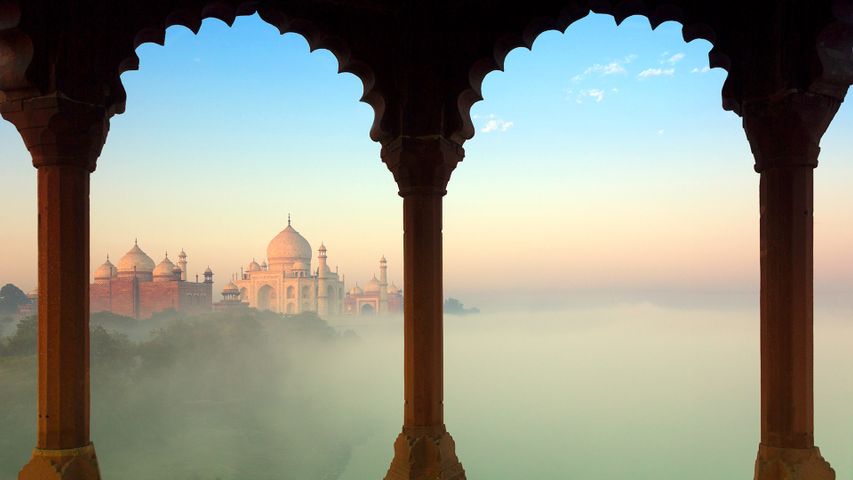Cueva de las Manos (Cave of the Hands) in Santa Cruz, Argentina
© Adwo/Alam
9,000-year-old handprints. International Day of the World's Indigenous Peoples
What at first glance appears to be graffiti tagged on a rock wall is, in fact, artwork created by the first human settlers of this remote region deep in Argentine Patagonia. It’s thought that the cave paintings were made between 13,000 and 9,500 years ago. The archaeological site is known in Spanish as the Cueva de las Manos (Cave of the Hands). It’s the largest display of prehistoric handprints in the world, made all those years ago by people holding a hand against the rock wall and blowing pigments through tubes made of bone. Of the 829 black, white, red, and ochre prints, most are of young male hands. One print has six fingers, and only 31 are of right hands.
The cave paintings were created in at least three waves over thousands of years by ancestors of the Tehuelche people. Archaeologists have hypothesised that the artists were hunter-gatherers. This theory is supported by the fact that even older than the handprints are depictions of guanacos (a relative of the llama, and the main source of food at the time); rheas (large flightless birds); and hunting scenes.
Today, more than 370 million Indigenous people live in various regions of the world, like the Teheulche, who continue to live in Patagonia near the southern border between Argentina and Chile. To honour and protect the rights of the world’s current Indigenous populations, the UN marks each August 9 as International Day of the World’s Indigenous Peoples. We’ll raise our hands in support of that.
Related Images
Bing Today Images


 Bottle cap mural by Oscar Olivares in Guatire, Venezuela
Bottle cap mural by Oscar Olivares in Guatire, Venezuela
 'The Spirit of Electricity' by Raoul Dufy, Museum of Modern Art, Paris, France
'The Spirit of Electricity' by Raoul Dufy, Museum of Modern Art, Paris, France
 Traditional red fishermen's cabins on the shore of Reinefjorden, Norway
Traditional red fishermen's cabins on the shore of Reinefjorden, Norway
 Aerial view of glacial rivers in Iceland
Aerial view of glacial rivers in Iceland
 Prayer flags in Phobjikha Valley, Bhutan
Prayer flags in Phobjikha Valley, Bhutan
 'Gateway' pool at Jupiter Artland sculpture park, Edinburgh, Scotland
'Gateway' pool at Jupiter Artland sculpture park, Edinburgh, Scotland
 Blacktip reef sharks, Maldives
Blacktip reef sharks, Maldives
 Farmland in the Palouse, Washington, USA
Farmland in the Palouse, Washington, USA



